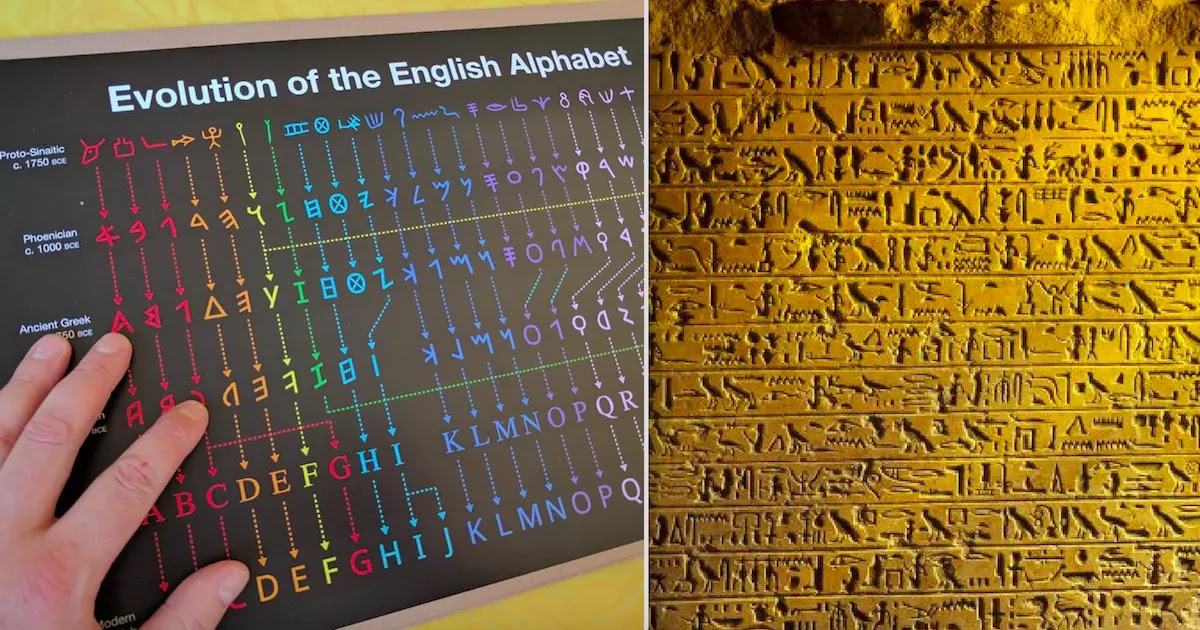
The alphabet is one of humanity's greatest creations. Since the dawn of civilization, the creation of reading and writing has allowed us to log information and pass it on to both those currently living and for future generations. It allowed us to express complex ideas and create history that wasn't just simply to be passed on through oral-recital. While every alphabet in each language tends to be slightly different, many have their origins in major languages of early civilization and antiquity, such as Ancient Egyptian and Ancient Greek. The languages with their origins in these ancient scripts include modern-day English. In fact, if you were to trace back the English alphabet far enough, you can see exactly when each individual letter we use today originated.
That is exactly what Matt Baker, of the website 'Useful Charts' has done. He created a wonderful unique poster that shows how each modern-day English letter has its roots going back almost 4,000 years.
The chart begins with the ancient Egyptian Proto-Sinaitic alphabet, through Phoenician, to Ancient Greek to early Latin, and then to Roman Latin and finally modern-day English. What is remarkable is that many of the letters are identifiable at an early stage in history, notably the letter 'A', whereas other letters bare almost no resemblance what-so-ever to their modern incarnations. Many letters have been completely erased from history, though do live on in modern Greek, such as 'Ψ' - (Psi), which appears in the ancient Greek alphabet (at the very end of the Ancient Greek alphabet in the poster) as a little tree with three points.
Evolution of the English Alphabet from r/Damnthatsinteresting
What is most remarkable is that most of the changes in the development up until modern-day English occur in the first 1,750 years of the diagram, with the Roman Latin alphabet emerging 2,000 years-ago looking near identical to the alphabet we use today in English. Indeed, the biggest change in how the alphabet looks most certainly took place between the Egyptian Proto-Sinaitic phase and the Phoenician phase. It is only once we reach the time of the Ancient Greeks that things start to look vaguely familiar. The question must then be asked, as to whether we have now perfected the English language alphabet, or whether there could be more changes in the future.
We have already seen how technology and new communication methods have spurned a whole new world of words and written language and therefore it is entirely conceivable that the alphabet may eventually change as well. Who knows, maybe in 2,000 years, humans will be looking back on modern-English and remarking at how similar it is to their alphabet, or perhaps it will appear to them in the same way Ancient Egyptian appears alien to us.
This fascinating 'Evolution of Language' chart is now being sold as a Christmas present for anyone who thinks their friends and family would love to have something truly unique for their walls.













COMMENTS